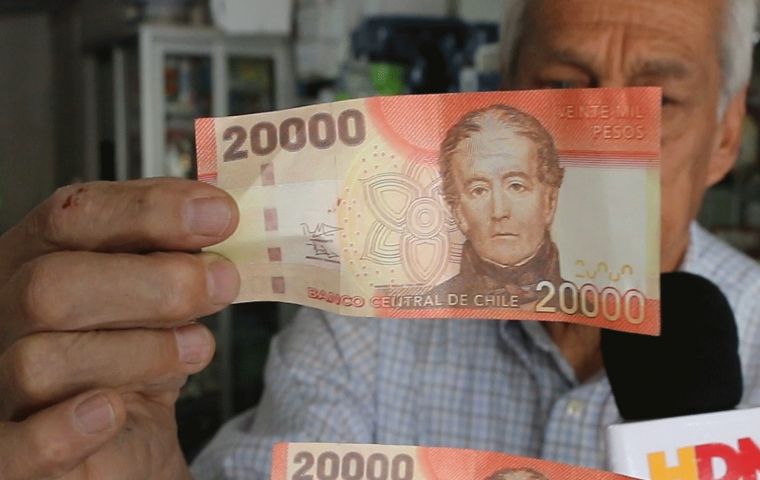MercoPress. South Atlantic News Agency
Packs of Chilean counterfeit money available on social media
 Even if received unknowingly, anyone who detects one of these bills must report it immediately, Carabineros insisted
Even if received unknowingly, anyone who detects one of these bills must report it immediately, Carabineros insisted Chilean criminal organizations are openly offering counterfeit banknotes on social media platforms, including Instagram. These counterfeit bills are often referred to as “5G banknotes” and are advertised by accounts claiming to be “premium money providers.”
Sellers post informal, emoji-laden ads with attractive exchange rates, such as acquiring CH$90,000 (fake) for CH$20,000 (real), or over CH$300,000 (fake) for CH$60,000 (real). They even include audacious tips for use, such as: “Use the banknote for a maximum of two months, then discard it,” and “Do not wet the banknote, it can fade and lose its real tone.” Unlike old homemade counterfeits, these are described as high-quality digital products with pirated textures, holograms, and watermarks, making them difficult to spot.
Chilean Law Enforcement (Carabineros) warn that possessing a counterfeit bill is a serious problem, even if received unknowingly. Anyone who detects one must report it immediately to help track down the criminals.
Experts recommend using the “Look, Tilt, and Touch” technique to verify authenticity, focusing on the security features of genuine banknotes. A watermark is visible when held up to the light, showing a black and white image of the central figure and the denomination. Additionally, a transparent area should feel smooth to the touch, while a strip visible through the bill against the light includes text with the denomination on lower-value notes. Other patterns should align perfectly to form the denomination number when held up to the light. And tiny, visible-with-a-magnifying-glass inscriptions reinforce authenticity. Users should also look for a unique serial number consisting of two letters and eight digits in two places on the reverse side.
When tilting, a 3D strip partially visible security thread should create a movement effect, and symbols inside appear to move in opposite directions. On CH$10,000 and CH$20,000 notes, the color of the lower number on the reverse changes when tilted.
Chilean authorities also recalled that CH$10,000 and CH$20,000 notes are made of cotton paper (resistant and slightly rough). Lower denominations are made of polymer (soft, flexible plastic). Moreover, a perceptible relief should be felt by running your fingers over the portrait, central bank text, denomination numbers, and tactile marks. This is achieved through calcography, which is difficult to replicate.
A UV lamp can also be used, but it may not be enough to detect a forgery, it was also explained.




Top Comments
Disclaimer & comment rulesCommenting for this story is now closed.
If you have a Facebook account, become a fan and comment on our Facebook Page!